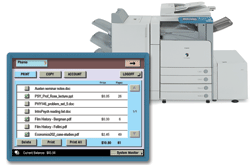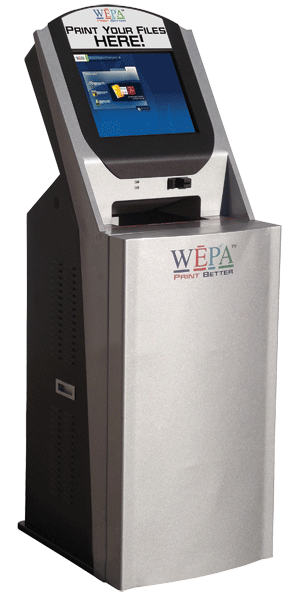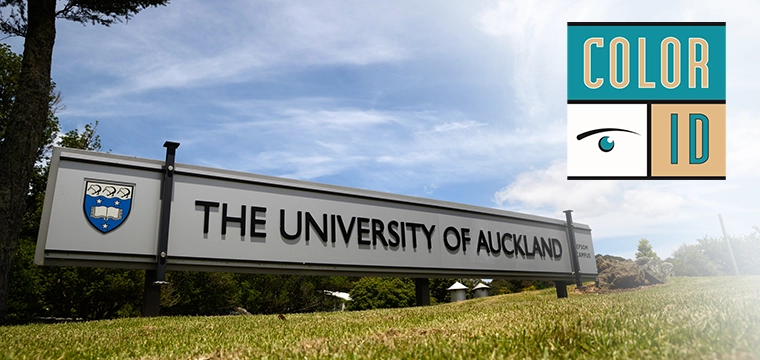
When small Mercyhurst College, a 4,000 student institution Erie, Penn., decided to revamp its print and copy management system, the school had no idea about the cost savings it would unleash. By the second year of operation the school was experiencing an 80% savings compared to years prior to the deployment.
“We didn’t expect to have cost savings of that amount,” admits John Patterson, Mercyhurst’s OneCard director. “We knew our (print) costs were out of control,” he says. “It was not unusual to have inkjets sitting on everyone’s desk.”
The cost of paper, print cartridges and toner were eating up the school’s print budget. Installing a new system meant the school had a chance to cut those costs.
Mercyhurst made the decision to implement a campus-wide print management system because of the cost it incurred with its old system. The school already had Pharos’ print management software on campus in the library and other public areas, and after a bidding process awarded a campus-wide print, fax and copy system to the company, Patterson says. Originally there were 285 inkjets, 62 laser jets and 137 all-in-one devices totaling 565 printers. The new system streamlined this to just 80 printers. This includes some departments with very specific needs and devices, says Patterson.
IKON Office Solutions, a Ricoh company, provided the wireless printing system, says Patterson. The multi-function printers interfaced with the campus card system from CBORD and the school’s key IT systems. They selected a Canon multi-function printer with Pharos’ Uniprint print management software embedded.
Mercyhurst uses Uniprint and its sister software Off-The-Glass, to track copies, says Ron Carson, account manager at Pharos. The copying tracking product was installed on more than 70 Canon integrated multi-function printers.
The Pharos solution is server-based, Carson explains. A user can hit the print button from an application on a network-connected computer or device and the job will be held in a printer queue. The student can then retrieve the job from a multi-function printer by swiping their ID or entering their login. They can also check their account balance at the printers.
“We have cash-to-card devices that allow students to put money onto their card. There’s one in the bookstore and one in the library,” says Patterson.
The ability to review the list of jobs before printing and thus being able to delete jobs that are obsolete contribute to cost savings of 30%, adds Carson.
There are a couple of different ways a school can deploy Pharos. The system is capable of being integrated into existing campus card systems but it can also be used as a standalone system, Carson says. “We get lots of cooperation from campus card providers,” he adds. “Blackboard is an authorized reseller of our solution and CBORD is one of our technology partners.”
At Mercyhurst all the processing happens in the CBORD system, there is no value on the card. Within the CBORD system there are different purses, one for meals, another for printing, and so forth, says Carson. The purses are separated so a student can’t use his meal plan funds or printing.
Print management systems save money for the institution in consumables but they can also save money for the student, says Carson. Because students have that extra chance to review a list of the jobs and cancel what they don’t need they don’t spend money on unnecessary prints. The print jobs also cost less, students pay a nickel for a regular copy, a far cry from the 15 cents they used to pay, and 34 cents for color versus 39 cents before.
The school had charged faculty 15 cents a page for a black and white copies and prints, says Patterson. Now, faculty and staff pay one cent for black and white copies or print jobs.
In addition to the cost savings, the system also helps Mercyhurt be more environmentally conscious. “A managed print and copy program actively promotes environmental sustainability,” Carson explains.
For students, the system offers convenience, security and cost effectiveness. “They can work on network-connected workstations or wireless laptops with the knowledge they can release their print jobs at any Pharos connected machine on campus. The system requires they authenticate at the device so there is no chance someone else will see or obtain their work,” says Carson.
For the future, Patterson hopes to migrate the print management system’s card authorization to the contactless technology on the campus ID. Today Mercyhurst uses contactless for dorm access and mag-stripe for the other functions. One day Patterson would like to have everything on the contactless portion of the card. It would be, he says, a simple matter to change out the USB readers on the printers for an iCLASS USB interface reader, he adds.
In the meantime, he’ll have to be satisfied with saving the college a bucket load of cash via an integrated print management solution.
 A relative newcomer to the campus print management game is taking a different approach than previous providers. WEPA–Wireless Everywhere, Print Anywhere–lets campuses outsource their printing functions easing costs and workload.
A relative newcomer to the campus print management game is taking a different approach than previous providers. WEPA–Wireless Everywhere, Print Anywhere–lets campuses outsource their printing functions easing costs and workload.
Employing cloud computing and Software as a Service concepts, WEPA can help eliminate an institution’s dependence on equipment purchases or leases, hardware and software licenses and maintenance and server integration fees.
Using the system, students upload documents for printing from any Internet computer or device and then print them at kiosks.
They send print jobs to the cloud from a network computer, wireless laptop or device, says Frank Griffith, CEO at the company. At kiosks placed around the campus, they securely retrieve their jobs and print where and when it is convenient.
When not in use for printing, the kiosks double as a campus communications tool–displaying announcements, emergency notifications and ads. Students can access an RSS feed to update them of different activities on campus. Targeted advertisements from local or national merchants can create new revenue for the campus.
WEPA supports multiple platforms including Windows, Mac, Linux and UNIX, and offers students the option to print their documents in black and white or color, as well as double-sided prints.
According to the company, more than 30 campuses will implement the system this fall and 70 are expected for spring 2012 implementations. Among the fall implementers is the University of West Florida. The Pensacola, Fla.-based institution is working with Heartland Campus Solutions to install kiosks at the UWF Student Center, libraries, computer labs, residence halls and classrooms.




